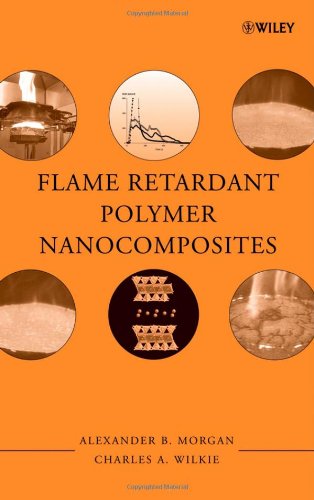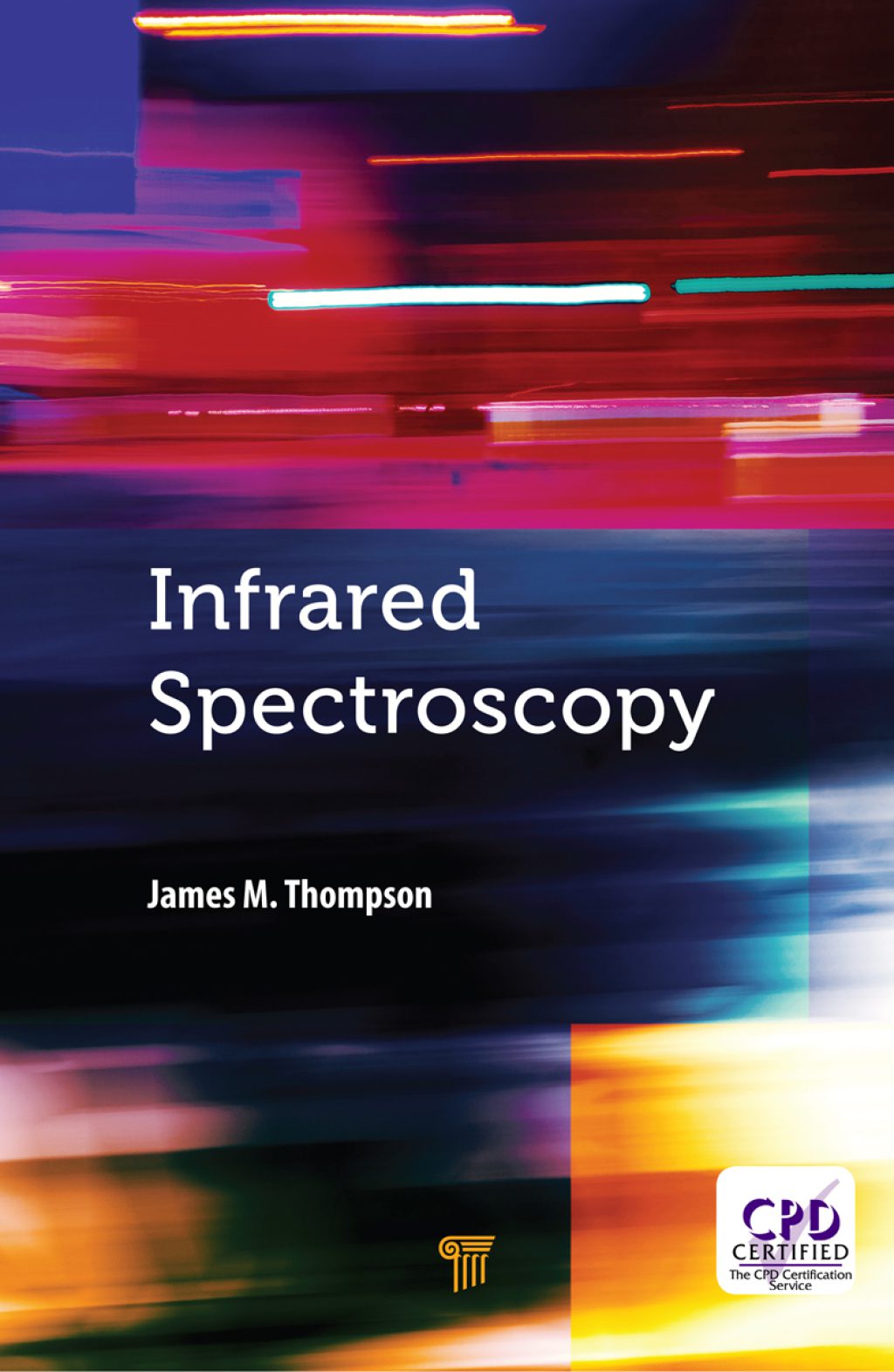Alexander B. Morgan, Charles A. Wilkie0471734268, 9780471734260
The book has practical examples from literature, patents, and existing commercial products. Readers can design new work based upon the material in the book or use it as a handy reference for interpreting existing work and results.
Table of contents :
FLAME RETARDANT POLYMER NANOCOMPOSITES……Page 3
CONTENTS……Page 7
Contributors……Page 13
Preface……Page 15
Acronyms……Page 19
1.1 Introduction……Page 23
1.2.1 Laboratory Flammability Tests……Page 25
1.2.2 Polymer Combustion……Page 27
1.3.2 Specific Flame Retardant Mechanisms……Page 29
1.3.4 Highly Dispersed Flame Retardants……Page 42
1.4 Conclusions and Future Outlook……Page 44
References……Page 45
2.1 Introduction……Page 53
2.2.1 Thermodynamics of Nanoscale Filler Dispersion……Page 55
2.2.2 Synthetic Routes for Nanocomposite Formation……Page 58
2.2.3 Dispersion Characterization: Common Techniques and Limitations……Page 64
2.3.1 Effects on Polymer Crystallization……Page 67
2.3.2 Effects on Mechanical Properties……Page 73
2.3.3 Effects on Barrier Properties……Page 78
2.4 Future Outlook……Page 82
References……Page 83
3.1 Introduction……Page 89
3.1.1 Initial Discoveries……Page 90
3.2.1 Polystyrene Nanocomposites……Page 91
3.2.2 Polypropylene–Clay Nanocomposites……Page 97
3.2.3 Thermal Analysis of Polymer–Clay Nanocomposites……Page 103
3.3 Conclusions and Future Outlook……Page 104
References……Page 105
4.1 Introduction……Page 111
4.2 Background and Context……Page 112
4.3 Description of the Method……Page 115
4.4 Application to PS–CNT Composites……Page 118
4.5 Uncertainties and Limitations……Page 122
4.6 Summary and Conclusions……Page 126
References……Page 127
5.1 Introduction……Page 129
5.2.1 Intercalation, Delamination, Distribution, and Exfoliation……Page 130
5.2.2 Orientation……Page 133
5.2.3 Morphology During Combustion or Barrier Formation……Page 134
5.3.1 Inert Filler and Char Formation……Page 135
5.3.2 Decomposition and Permeability……Page 137
5.3.3 Viscosity and Mechanical Reinforcement……Page 139
5.3.4 Barrier for Heat and Mass Transport……Page 140
5.4.1 Differentiated Analysis with Regard to Different Fire Properties……Page 143
5.4.2 Different Fire Scenarios Highlight Different Effects of Nanocomposites……Page 145
5.5 Summary and Conclusions……Page 146
References……Page 147
6.1 Introduction……Page 153
6.2 Basics of Intumescence……Page 155
6.3 Zeolites as Synergistic Agents in Intumescent Systems……Page 160
6.4 Intumescents in Polymer Nanocomposites……Page 165
6.5 Nanofillers as Synergists in Intumescent Systems……Page 169
6.6 Critical Overview of Recent Advances……Page 175
References……Page 179
7.1 Introduction……Page 185
7.2.1 Materials……Page 190
7.3.1 Processing and Structure of EVA/Organoclay-Based Nanocomposites……Page 191
7.3.2 Thermal Stability of EVA/Organoclay-Based Nanocomposites……Page 192
7.3.3 Flammability Properties of EVA/Organoclay-Based Nanocomposites……Page 193
7.3.4 NMR Investigation and Fire Retardant Mechanism of EVA Nanocomposites……Page 195
7.3.6 Combination of the Classical Flame Retardant Filler Alumina Trihydrate with Organoclays……Page 196
7.3.7 Coaxial Cable Passing the UL-1666 Fire Test with an Organoclay/ATH-Based Outer Sheath……Page 198
7.4.3 Flammability of EVA–MWCNT and EVA–MWCNT–Organoclay Compounds……Page 199
7.4.5 Flammability of LDPE Carbon Nanotube Compounds……Page 201
7.4.6 Cable with the New Fire Retardent System MWCNTs–Organoclays–ATH……Page 204
References……Page 208
8.1.1 Polymer–Organoclay Nanocomposites……Page 213
8.1.2 Conventional Halogen and Nonintumescent Phosphorus-Containing Flame Retardants……Page 214
8.2 Preparation Methods and Morphological Study……Page 215
8.2.1 Melt Compounding and Solution Blending……Page 216
8.2.2 in situ Polymerization Method……Page 220
8.2.3 Summary of Synthetic Methods……Page 222
8.3 Thermal Stability……Page 223
8.4 Mechanical Properties……Page 226
8.5 Flammability Properties……Page 228
8.5.1 Cone Calorimetry……Page 230
8.5.2 LOI and UL-94 Tests……Page 238
8.6 Flame Retardant Mechanism……Page 244
8.6.1 Combination of Nanocomposites and Halogen Flame Retardant Additives……Page 246
8.6.2 Combination of Nanocomposites and Nonintumescent Phosphorus Flame Retardant Additives……Page 247
8.7 Summary and Conclusions……Page 249
References……Page 250
9.1 Introduction……Page 257
9.2.2 Anionic Clays……Page 259
9.3 Thermoset Nanocomposites……Page 261
9.4.1 Preparation Procedures……Page 262
9.4.2 Characterization of the Composite……Page 266
9.4.3 Thermal Stability and Combustion Behavior……Page 269
9.5 Epoxy Nanocomposites Based on Anionic Clays……Page 277
9.5.1 Preparation Procedures……Page 278
9.5.3 Thermal Stability and Combustion Behavior……Page 283
9.6.1 Preparation Procedures……Page 293
9.6.3 Thermal Stability and Combustion Behavior……Page 294
9.7.2 Characterization of the Composite……Page 296
9.7.3 Thermal Stability and Combustion Behavior……Page 298
9.8 Summary and Conclusions……Page 299
References……Page 300
10.1 Introduction……Page 307
10.2.1 Nanoscale Silica Particles……Page 308
10.2.2 Metal Oxides……Page 310
10.2.3 Polyhedral Oligomeric Silsequioxanes……Page 311
10.3.1 Graphite Oxide……Page 317
10.3.2 Carbon Nanotubes……Page 321
10.4.1 Flame Retardant Mechanism……Page 337
10.4.2 Morphology……Page 338
10.5 Summary and Conclusions……Page 340
References……Page 341
11.1 Introduction……Page 347
11.2 Requirements for Nanocomposite System Applications……Page 348
11.3.1 Bulk Polymeric Components……Page 353
11.3.2 Films, Fibers, and Textiles……Page 356
11.3.3 Coatings……Page 365
11.3.4 Composites……Page 366
11.3.5 Foams……Page 369
11.4 Future Outlook……Page 370
References……Page 371
12.1 Introduction……Page 377
12.2.1 Synthesis Procedures……Page 378
12.3 Polymer Nanocomposite Analysis……Page 387
12.3.1 Nanoscale Analysis Techniques……Page 388
12.3.2 Microscale Analysis Techniques……Page 393
12.3.3 Macroscale Analysis Techniques……Page 394
12.4 Changing Fire and Environmental Regulations……Page 395
12.5 Current Environmental Health and Safety Status for Nanoparticles……Page 398
12.6 Commercialization Hurdles……Page 399
12.7 Fundamentals of Polymer Nanocomposite Flammability……Page 401
12.8 Future Outlook……Page 405
References……Page 410
Index……Page 423







Reviews
There are no reviews yet.